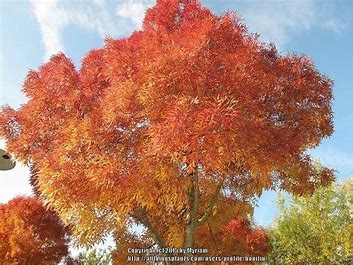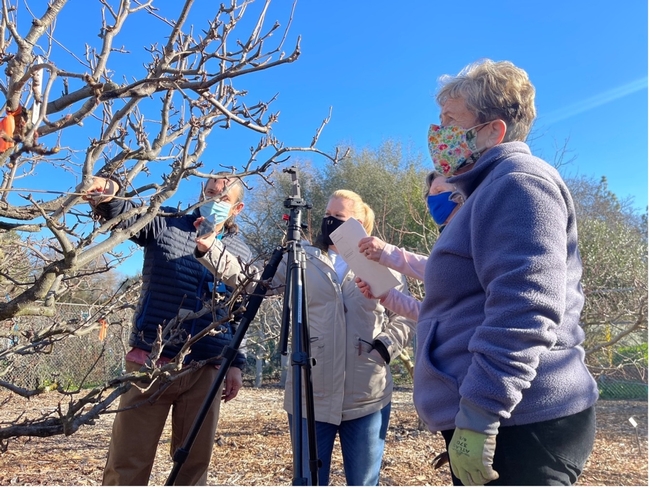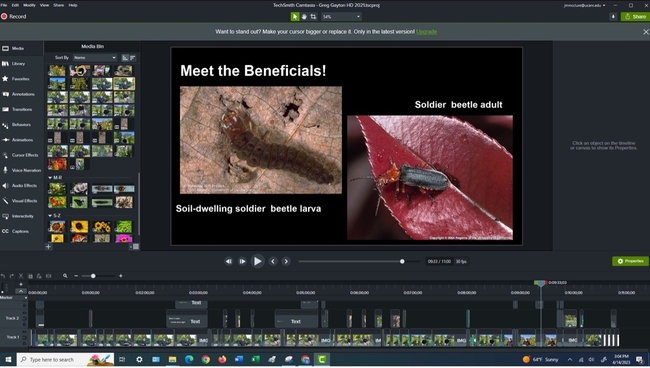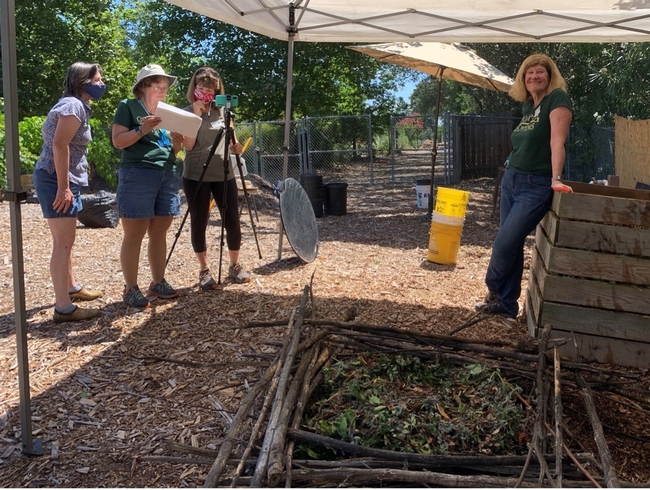Posts Tagged: Master Gardener
Master Gardener 2024 Fall Workshop Series
A new season of Master Gardener Workshops is about to start! The series begins September 9th with a session on Neighborhood Habitat Certification, and concludes on December 3rd with a timely workshop on Perennial Vegetable Gardening. In all, this Fall...
Lawn-pocalypse! Surviving Drought
Ah, summer! The season of sunburns, pool parties, and… lawn droughts. If your once lush, green carpet now looks like a crunchy brown doormat, you're not alone. Let's dive into why your yard is staging a dramatic death scene and what you can do to...

Bermuda grass and weeds overtaking drought stressed turf grass.
Master Gardener Spring 2024 Workshop Series
A new season of Master Gardener Workshops is about to start! The series begins February 3 with a timely session on starting summer vegetable plants from seed and concludes at the end of May with an exploration of weeds – how to identify common...
Fall Colors Explained
Welcome to Fall!
It's my favorite season and likely for many of you, as well. Beyond the holidays and extra time with family and friends, nature radiates its beautiful hues. In addition to lovely foliage, deciduous trees often expose exquisitely shaped and sturdy trunks. And, of course, there is the lovely fall foliage showcased by many species.
Did you ever wonder why trees "turn" color in the fall? The short answer: It's primarily a function of long, cool fall nights and short, sunny days. The longer answer? Chlorophyll is responsible for the basic green color of leaves we see in spring and summer and is a necessary component of photosynthesis, which uses sunlight to manufacture sugar (food) that is stored during the dormant period of the year. Carotenoids produce yellow, orange and even brown pigments in crops such as carrots, squash, bananas and many ornamental plants such as daffodils and poppies. Anthocyanins are red and orange in color and are most linked to lavish displays of brilliant fall foliage. They also give rise to coloring of strawberries, plums and cherries.
Here's the kicker: While chlorophyll and carotenoids are present in leaf cell chloroplasts throughout the entire growing season, during fall chlorophyll begins to break down. Voila! The lovely yellow and orange hues we all look forward to seeing are finally exposed. In addition, red hues (called anthocyanins) are produced in fall. So, in reality foliage doesn't "turn" orange or red at all.
Interestingly, the actual timing of color change varies across species and appears to be genetically inherited. The same species will exhibit a similar color scheme in cool temperatures in higher elevations at nearly the same time as it does in warmer lower elevation climates.
The intensity of color can vary quite a bit however. Where do temperatures enter the picture? Both the amount of color and the overall intensity of fall color is very linked to weather conditions that occur prior to and during the actual time the chlorophyll in leaves winds down. The most brilliant displays occur after several warm, sunny days and cool, crisp (above freezing) nights. This is because although lots of sugars are made in leaves during sunny daytime hours, the corresponding cool nights prevent the sugars from moving out. The amount of soil moisture also helps ensure that from year to year fall colors vary even in the same trees. So, either a late spring or a prolonged drought can both delay the display of fall color by a few days or even a few weeks.
What's the recipe for the most brilliant fall display? Most likely a warm, moist spring followed by a warm summer and sunny fall with cool autumn nights. Although fall color is not nearly as spectacular in lower elevations of Southern California compared to other colder areas of the nation, the liquidambar or American sweet gum (Liquidambar styraciflua) offers some pretty impressive fall color and an impressive 300 to 400-year life span. (Did you know that liquidambar got its name because it at one time was a sought-after chewing gum for Native Americans?)
Two “climate-ready” tree species with lovely fall foliage that grow in both the west portion of the county and the desert are the ‘Keith Davey' Pistache, a large street and park tree sporting crimson to scarlet colored foliage and its relative, the ‘Red Push' Pistache, a hybrid between P. atlántica x P. integerrima) which has lovely red foliage as it emerges in Spring as well as Fall. Others include the Raywood Ash (Fraxinus oxycarpa 'Raywood') sporting a reddish-purple hue in the fall, and the ‘Sunburst' Locust (Gleditsia triacanthos var. inermis 'Sunburst') which offers a vivid display of fall color. Unfortunately, it is susceptible to the Invasive Shot-Hole Borer. If you have one of these lovely trees already, take good care of it to help it stand up to this aggressive pest!
Happy Fall! Enjoy the cooler weather, family and friends, and lovely trees!

Raywood Ash source national gardening association
Sacramento County: Video Learning Reaches Larger Audiences
In 2020 near California's state capital, UC Master Gardeners of Sacramento County awaited with excitement for its annual Harvest Day they organized each year. But the ongoing pandemic forced the cancellation of this much-anticipated event leaving the usual over 1500 attendees disappointed. Each year Harvest Day provided a colorful assortment of speakers, vendors, and food all in celebration of sustainable gardening. In the name of resilience, the UC Master Gardeners of Sacramento County charged a path of embracing change while cultivating accessibility to gardening help and the beloved tradition of Harvest Day.
With grit and determination, the UC Master Gardeners transformed Harvest Day into “Virtual Harvest Day,” an online learning experience that overcame the barriers that Covid created. An incredible video learning experience took the place of the in-person festival. Instead of Harvest Day's typical speeches and demonstrations, UC Master Gardeners created over 20 captivating videos debuting on its newly established YouTube channel.
“Virtual Harvest Day” was an extraordinary success attracting an audience of 4,389 viewers, nearly three times the normal average number of in-person attendees. This victory inspired the program to continue providing gardening support through online webinars and recorded videos. This innovative approach eliminated the many obstacles of the pandemic and welcomed gardeners from around the world. Now, plant lovers, garden enthusiasts and gardening beginners from all walks of life can access UC Master Gardener help.
Since the launch of the YouTube Channel, subscriber counts have skyrocketed to about 22,800 with an astounding increase of +4,500 since April and more than 200 views daily. The comments section showcases gratitude for the helpful content with comments like, “Very informative and helpful video! Thank you” and “I have learned mistakes made previously in my garden. Well done!!!”
The green thumb classroom enriched the lives of the UC Master Gardeners of Sacramento County themselves. Through the video creation process, UC Master Gardeners were able to dive deep into research, writing, and production allowing their gardening knowledge and ability to educate to blossom.
UC Master Gardener of Sacramento County's video project serves as an inspiration across the state and has inspired other programs to create accessible video content. The setbacks of the Covid pandemic demonstrated the UC Master Gardeners of Sacramento County's resilience and dedication to giving back to their community. Volunteers turned a pandemic cancellation into an educational experience that transcends the limitations of time and location and creates an online community space centered around gardening. The program's YouTube channel has opened the doors of gardening education to people who never had access before. Congratulations to UC Master Gardeners of Sacramento County for their dedication and perseverance that won them third place in the Search for Excellence awards competition!



